Research Vessels at PNNL-Sequim
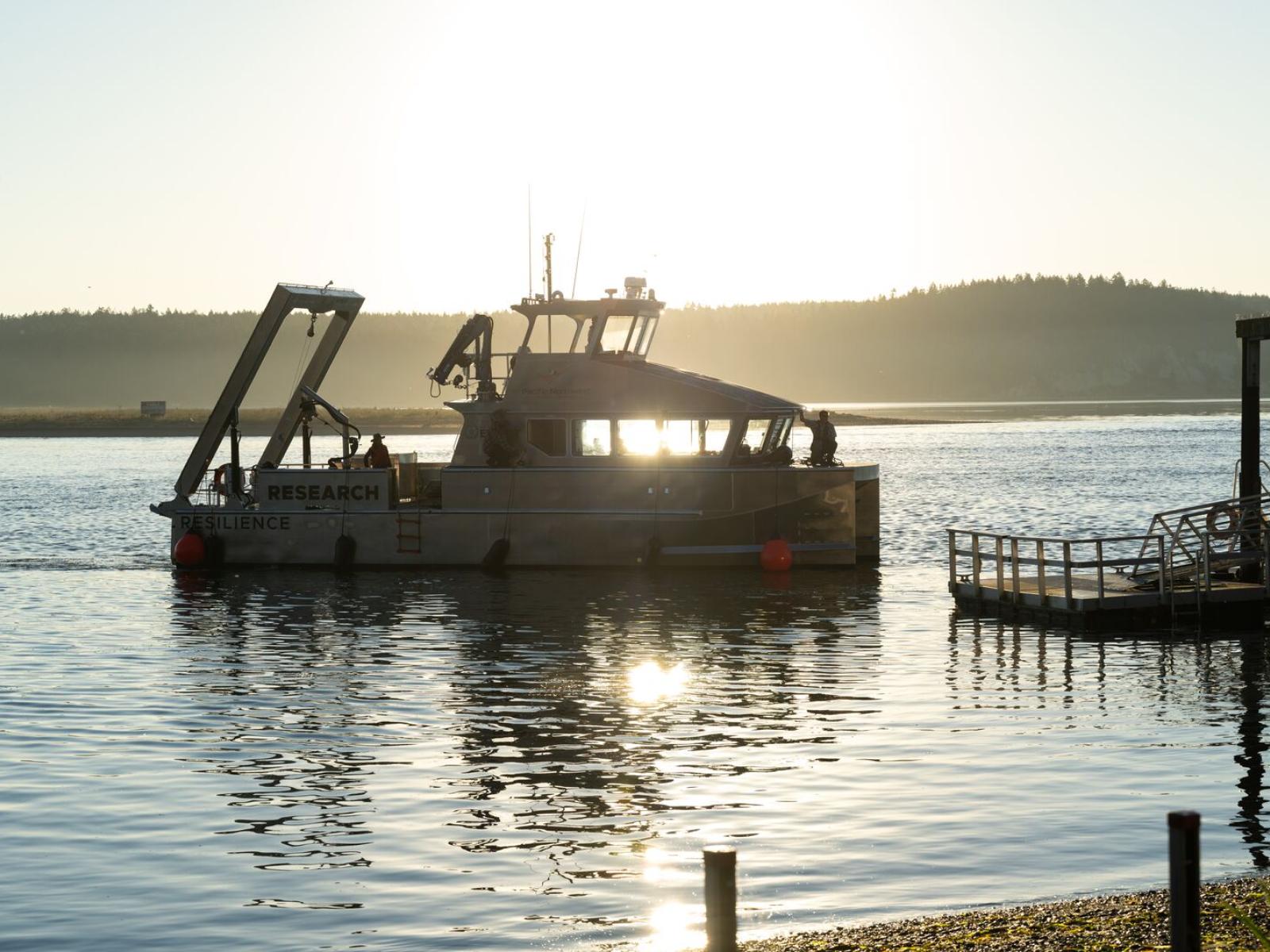
The RV Resilience arrives at the PNNL-Sequim dock.
(Photo by Andrea Starr | Pacific Northwest National Laboratory)
PNNL-Sequim has five research vessels (RVs) available for performing scientific research in the Pacific Northwest: the 50 ft Resilience, 31 ft Desdemona, 28 ft Strait Science, the 23 ft Lutea, and the 17 ft Tenacious A.
RV Resilience
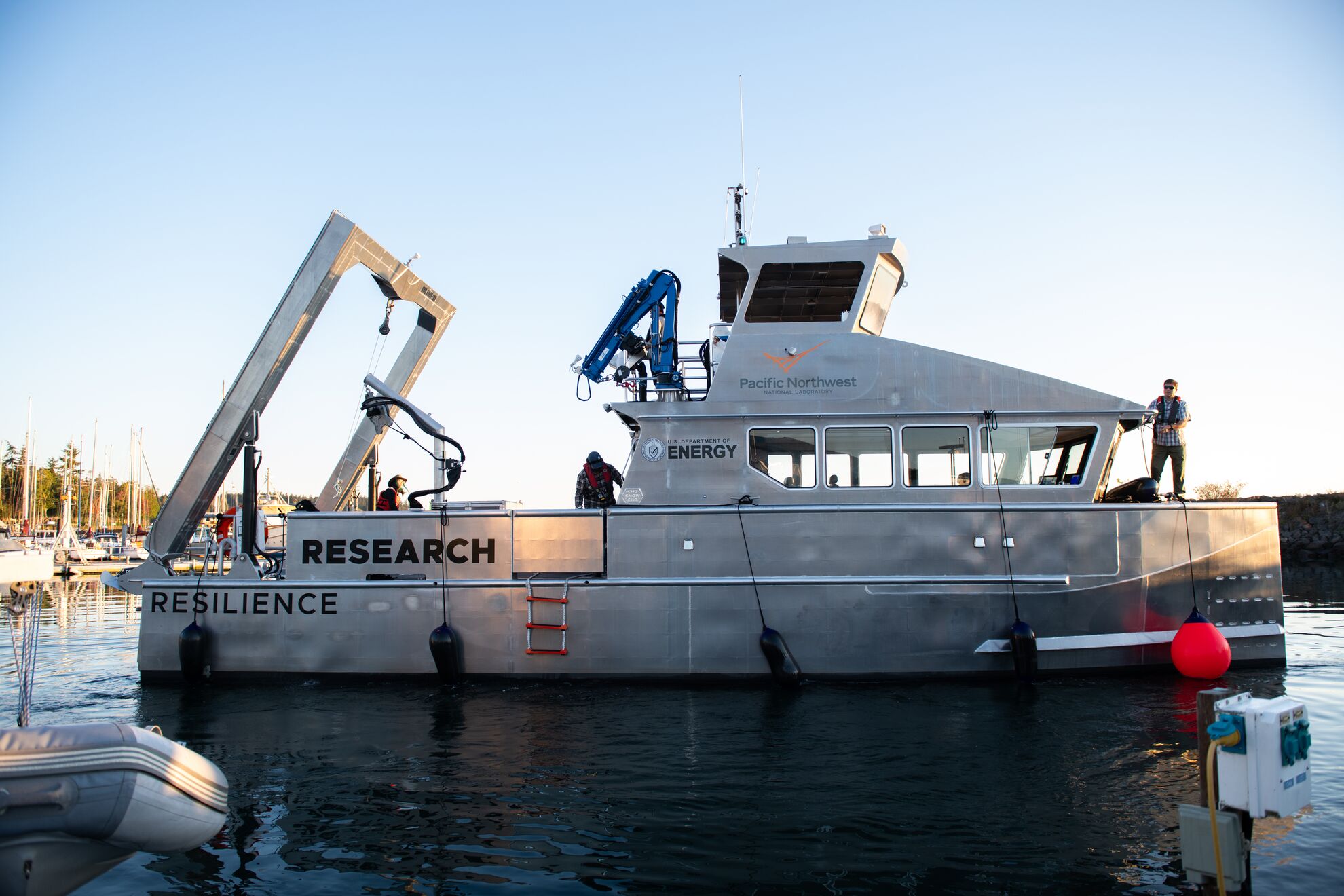
The RV Resilience was constructed by Snow & Company in Seattle, Washington, and arrived at PNNL-Sequim in 2024. It is the Department of Energy's first hybrid electric-diesel research vessel, and will be used to support research operations in energy, environment, and national security.
The RV Resilience is 50 ft long, with a 16 ft beam and 4 ft draft. It is outfitted with an onboard laboratory, powerful lifting capacity with an A-frame and boom crane, a spacious deck for deploying and recovering large instrument packages, and support for a variety of sensors. The vessel is powered by Volvo Penta D8 diesel engines and Danfoss Editron electric motors, and can be charged with the diesel engines, at any marina, or through a rapid charging station at the PNNL-Sequim dock. Learn more.
RV Desdemona
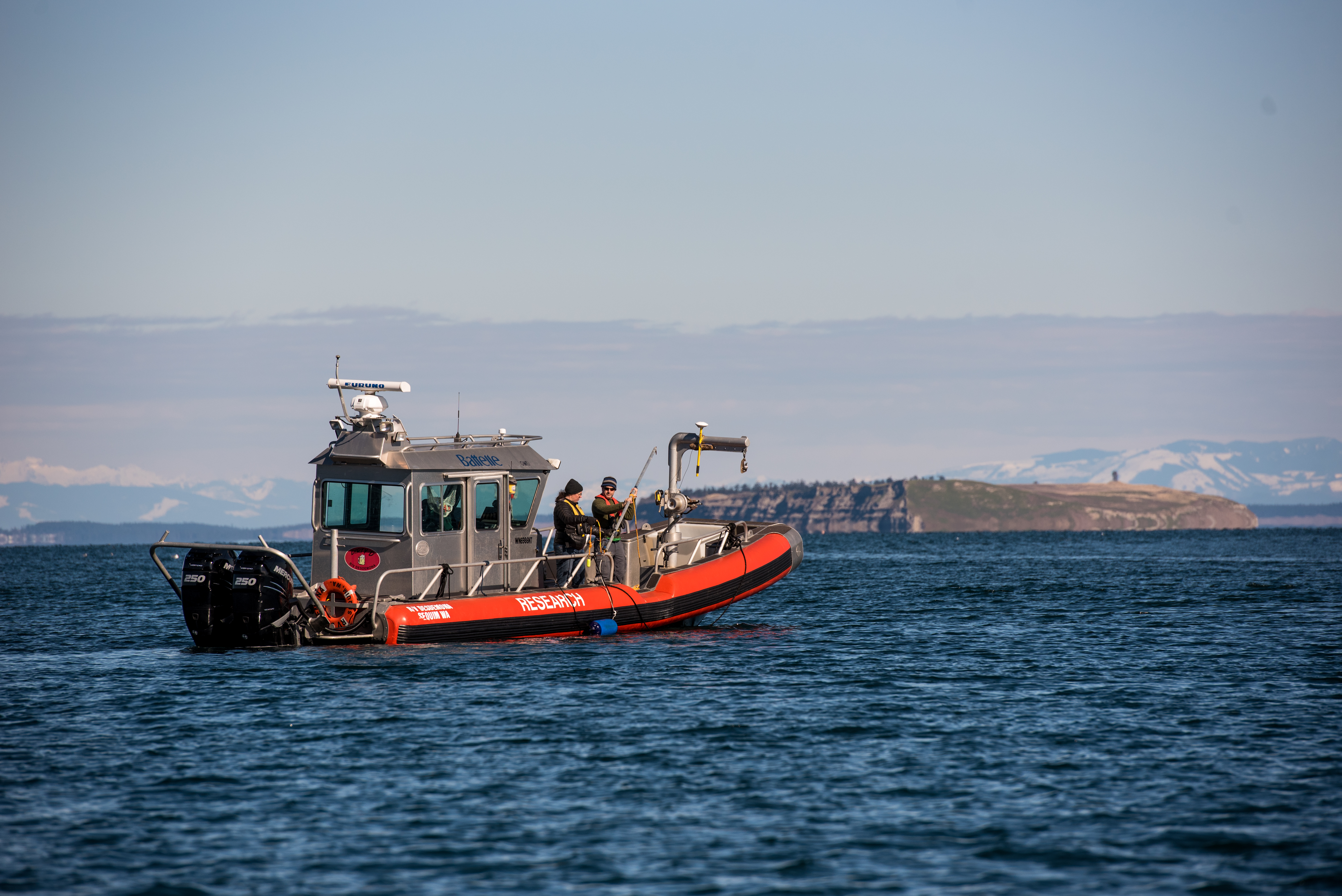
The RV Desdemona was constructed in 2006 by SAFE Boats International in Port Orchard, Washington. The boat has been used to conduct numerous research projects ranging from the deployment of hydrophones and cables to radiation detection work while underway. It frequently supports the PNNL Research Dive Team.
The hull is marine-grade 5086 aluminum (5/16-in) designed to be self-bailing even without forward movement. The boat is 31 ft long, with a 10 ft beam and a 22 in draft. Its size makes it well-suited for nearshore work and its beam allows it to be trailered as an oversize load. The boat has a walk-around cabin and a drop-down bow. Open deck space in the bow is at least 3.5 ft wide by 13 ft long and is used for equipment staging and deployment. The boat is powered by twin 250-hp Mercury gasoline engines. Onboard electrical power includes 12V DC plus 120V AC supplied by an inverter with power receptacles.
RV Strait Science
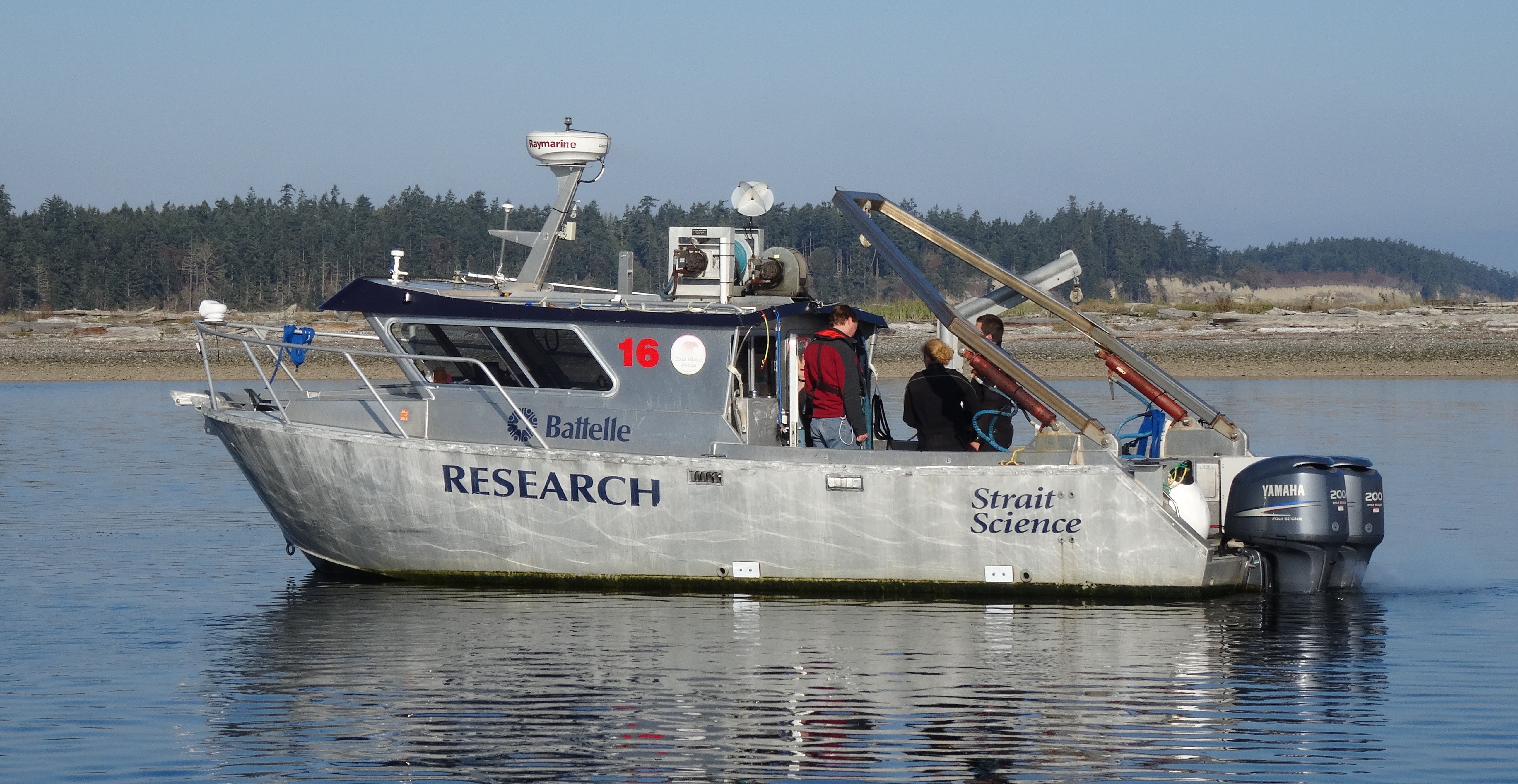
The RV Strait Science was constructed in 1998 by Cold Water Boats out of Marysville, Washington. The vessel has been used to perform underwater video and side scan sonar studies, sediment sampling, and to deploy and retrieve a variety of scientific equipment. The Strait Science is also a dive platform for the PNNL Research Dive Team.
The vessel is aluminum-hulled, 28 ft long, and has a 10.2 ft beam and a 4.7 ft draft. The overall design is one often used by commercial fishermen, but the Strait Science was modified by the addition of a davit, a hydraulic winch, and A-frame system with a 1,000 lb load capacity and 500 ft of stainless steel cable. The cabin has two helm seats, with space to the rear that can be adjusted to accommodate additional crew and/or electronic equipment. There is equipment storage space in the berth area. Behind the cabin, the open deck space measures nearly 9 ft by 9 ft.
The boat is powered by twin 200 hp Yamaha gasoline engines, installed in 2015. Onboard electrical power (120V AC) is supplied by an 8.0 KW SBEG Westerbeke Gasoline Generator. A twelve-volt DC and an inverter supplying 120V AC are also available to supply power for computers and other sampling equipment.
RV Lutea
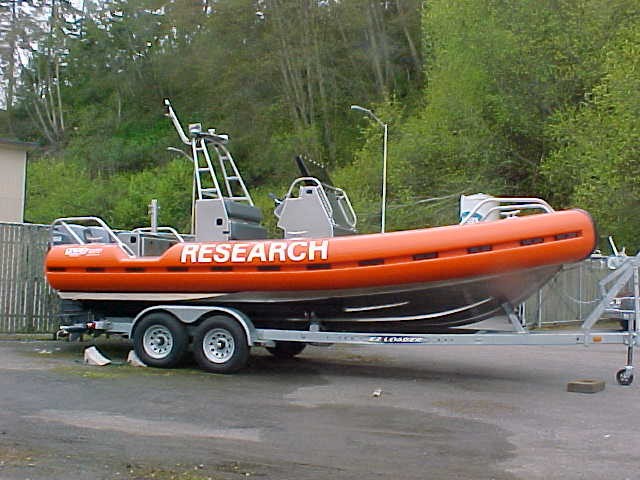
The RV Lutea was constructed locally in 2002 by SAFE Boats International. The boat has been used to conduct a variety of scientific endeavors, ranging from the deployment of autonomous underwater vehicles to transplanting Zostera marina (eelgrass) for restoration purposes. It serves as a platform for water and sediment sampling, for seining of nearshore fish species, and frequently supports the PNNL Research Dive Team.
The hull of the RV Lutea is marine-grade 5086 aluminum and designed to be self-bailing. The boat is 23 ft long with an 8.5 ft beam and a 26-in draft. Its size makes it well-suited for harbor work and shallow river operations, while its narrow beam enables easy trailering. The boat has a center console with open deck space in the bow (4 ft by 6 ft) for equipment storage and deployment.
The boat is powered by twin 115 hp Yamaha gasoline engines. Onboard electrical power includes 12V DC plus 120V AC supplied by an inverter.
RV Tenacious A
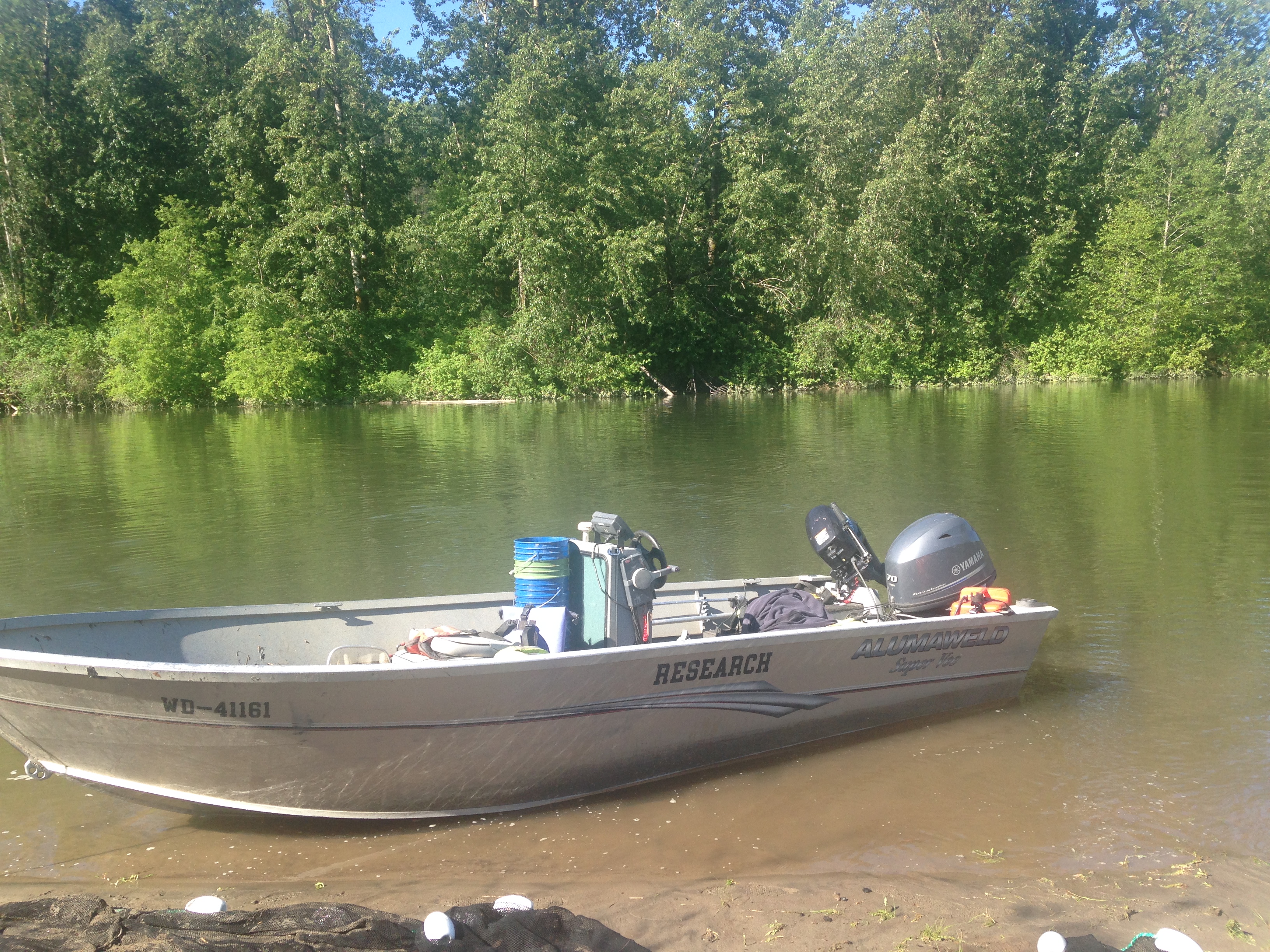
The RV Tenacious A is a 2003 Alumaweld Super Vee skiff with a center console and a 70 hp outboard engine. The Tenacious A is primarily used to access and work in smaller freshwater rivers, creeks, and sloughs. She has a removeable powered davit for limited lifting, a shallow draft, and is easily towed.